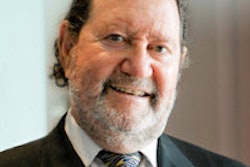
It's no secret that dentists are a cautionary group. We don't often jump on the latest tech trends immediately. Our patience has been rewarded countless times as "can't miss" fads, such as caries-dissolving solutions to excavate decay and electronic dental anesthesia, proved themselves to be nothing but hype.
But there comes a point in which caution turns into ignorance. To further our craft, dentists must not be afraid to shake things up and make strategic investments in their practice. The benefits -- both in revenue and patient outcomes -- outweigh the costs.
Here are some guiding principles I use to identify and integrate impactful technologies into my practice.
 Tony Hewlett, DDS.
Tony Hewlett, DDS.What is my return on this investment?
Technological investments are exactly that -- investments. Dentists often are dissuaded from new technologies because of the initial cost. Instead, practitioners should think of major purchases with the same mindset that they use with their investment broker. Sometimes it makes sense to buy into a company at a premium with the tacit knowledge that the stock will rise and provide you a significant return. Return-on-investment (ROI) is the sugar that helps the medicine go down.
For instance, I recently purchased a dental laser that cuts both hard and soft tissue for my practice. It was a major investment, but it enables me to perform same-day multiquadrant dentistry and even soft-tissue procedures I previously had to refer out. This increase in efficiency makes me five times my monthly payment and is adding considerable value to my practice. If I had not purchased this laser, I never would be reaping the rewards I am today.
Make a big impact on and for your patients
“Practitioners should think of major purchases with the same mindset that they use with their investment broker.”
The dental industry is currently experiencing a boom in great new products. You could spend millions on new gadgets and tools that incrementally improved your practice's service levels. Those technologies won't move the needle for your practice, though. Go for the gusto! Give your patients an experience that they can't help but tell their friends and family about. This objective was precisely what brought me to purchase my new digital x-ray technology.
Taking patient x-rays has long been an arduous process. Lead vests, scratchy mouth pieces, and radiation (however small) all make patients slightly uneasy. This new digital x-ray system reduces my patients' anxiety and radiation exposure. It also delivers an excellent image that helps improve my ability to diagnose dental caries or other areas of concern. This investment, like all of my others, comes with a win-win scenario for both my practice and clients.
Get staff onboard
While I'm the ultimate decision-maker for any major tech investments, these decisions do not happen in a vacuum. My staff is a critical component to successfully adopting new technology. Staff should be included very early on in the process to gain acceptance and ultimate successful adaptation of the technology. It does not work to go to a show, purchase the technology and then tell the staff to start using it.
Here's my three-step process for getting everyone in my practice on the same page:
Clearly communicate the type of product I'd like to purchase and why the practice needs it. New products often mean more work for people, so it's important to educate staff on the problem, solution, and benefits of each addition you make to the practice.
Incorporate select staff -- those who would be most affected by the new technology -- into the buying process. They are essentially an advisory board for me. My staff offers suggestions on what products we should evaluate and makes recommendations to help guide my decision.
Train all staff on the appropriate use of any and all tools used within the dental practice. I like everyone to have hands-on knowledge of what new products can and cannot do to raise the collective wisdom of the group.
By embracing new technologies, dentists can now proactively address the real concerns of their patients and take steps to create an inviting environment for premium dental care. To do that, dentists must have the courage to make investments that improve their practice. These three guidelines mitigate much of the risk involved in big-ticket purchases and will help your practice reach its full potential.
Tony Hewlett, DDS, received his Doctor of Dental Surgery from the University of Washington in 1984 and entered private practice immediately afterward. His website is www.hewlettdental.com.
The comments and observations expressed herein do not necessarily reflect the opinions of DrBicuspid.com, nor should they be construed as an endorsement or admonishment of any particular idea, vendor, or organization.



















